Common Diet Changes
Read the sections below to get food tips on:
Food Safety
Diet after a Gastrectomy or Esophagectomy
Diet after Ostomy
Tube Feeding at Home
Preventing Bowel Obstructions
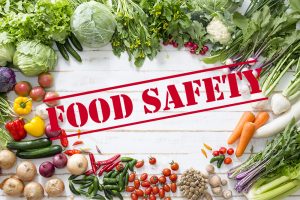
Food Safety for Transplant
Foods Allowed:
- Meat, Poultry, Seafood, Deli Meat that has been heated to appropriate temperatures
- Beef, Pork, Lamb- 145°F
- Chicken, Turkey, Duck- 165°F
- Seafood- 145°F
- Deli Meat- Microwaved until “steaming”
- Milk that has been pasteurized
- Eggs that have been pasteurized and cooked to 160°F
- Cheese made from pasteurized milk
- Hard cheeses
- Processed cheeses
- Cream Cheese
- Mozzarella
- Sprouts (alfalfa, bean, or any other sprout) that has been cooked
- Fruits and Vegetables that have been washed in water
- Lettuce that has been washed in water and spun dry in a salad spinner
- Wash fruits that you don’t eat the outside of, like watermelon, before you cut it
- Pâtés and meat spreads that are canned and pasteurized
Foods NOT Allowed:
- Meat, Poultry, Seafood, Deli Meat that has not been cooked to appropriate temperatures
- No rare meats or raw/undercooked fish like sushi or ceviche
- No refrigerated smoked fish or precooked seafood, such as shrimp and crab
- No Deli meat that has not been heated to “steaming”
- Unpasteurized milk
- Unpasteurized eggs, such as Farmer’s Market eggs, or eggs cooked to less than 160°F
- No raw cookie dough
- No Eggnog
- Soft cheeses made from unpasteurized milk, such as
- Feta
- Brie
- Camembert
- Blue-veined cheese
- Queso fresco
- Raw, uncooked sprouts
- Unwashed fruits and vegetables
- No lettuce that hasn’t been spun dry in a salad spinner
- No berries
- Pâtés and meat spreads that are unpasteurized
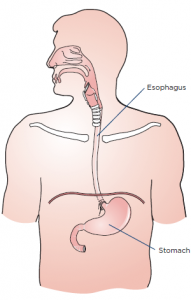
Diet after Gastrectomy or Esophagectomy
- Gradually add other liquids and soft foods (such as oatmeal, pudding, custards, milkshakes, cream soups, yogurt, and sherbet) to your eating plan. Try new liquids and foods one at a time so you can tell whether a particular type causes problems.
- Keep your portion sizes small. Many people cannot tolerate more than a few ounces of food at a time.
- Drink most beverages in between meals instead of with meals. Limit your fluids at each meal to 4 ounces. Commercial supplements like Ensure and Boost may cause some stomach upset.
- Slowly increase the amount you eat to six small meals per day that are low in fiber (<3 g per serving).
- Avoid high-fiber foods like bran and beans. These foods may be hard to tolerate.
- Limit very cold or very hot foods and drinks; eat slowly; and chew foods well.
- Limit sugary foods if you had a gastrectomy or have high blood glucose (sugar) levels.
- If diarrhea is a problem, limit sweets and eat foods that provide protein, like cottage cheese, peanut butter sandwiches, or sugar-free yogurt.
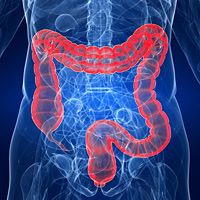
Diet after Ostomy
- Add small amounts of low-fiber foods back into to your diet, one at a time.
- For the first couple of weeks after a colostomy or ileostomy, you must avoid high-fiber foods, such as whole grains, dried beans, and most raw vegetables and fruits. The fiber in these foods may cause a bowel blockage.
- Avoid spicy, fried, or sugary foods.
- If you experience loose or runny stools, try eating the following foods that may thicken stools: banana, applesauce, pasta, potatoes, tapioca, rice, smooth peanut butter, or cheese.
- If you experience stool odor, eating the following foods may help: buttermilk, yogurt, kefir, parsley, and cranberry juice.
- Take small bites and chewing food well.
- Eat five or six smaller meals each day instead of two or three large meals.
- Eat a smaller meal in the evening so you won’t need to have a bowel movement at night.
- Drink at least 8 to 10 cups of fluid each day. You may need more fluid in hot weather, when you sweat, or if you have diarrhea.
- Do not use straws.
- Do not smoke.
- Do not use chewing gum or tobacco.
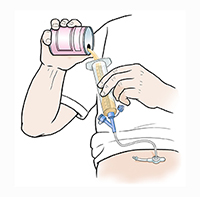
Tube Feeding at Home Tips
- Formula and water should be room temperature before administering.
- Wipe the tops of the formula cans with a clean paper towel before opening.
- Never lie flat during a tube feeding. If necessary, you may recline about 45°. Stay upright or reclined for 45-60 minutes after a feeding.
- Do not put anything but formula, water, and medication through your tube.
- Cover, label (with date and time opened), and refrigerate any open cans of unused formula. Use this formula within 24 hours of opening.
- To take a pill through your feeding tube, first crush the pill well. Dissolve the crushed pill in at least 30 mL of water. Flush the tube with water after administration.
- Never mix your medication directly into your formula.
- Take only one medication at a time.
- If you are administering your tube feed with a syringe:
- Slowly pour formula into the syringe. It should take 15 minutes to give 1 can of formula. Thicker formulas may take longer. If the formula is running too slowly, raise the tube and syringe up to help it go down faster. If you use the plunger, push the formula very gently and slowly into your tube to prevent upset stomach.
- Use a new syringe every 24 hours to decrease risk of bacterial contamination.
- If you are administering your tube feed with a gravity bag:
- You can slow the rate of feeding by slightly closing the clamp on the feeding bag. This may help prevent an upset stomach. It should take 20-30 minutes to finish one can of formula.
- Use a new feeding bag every 24 hours to decrease the risk of bacterial contamination.
- If your feeding tube becomes clogged:
- Try to lush the tube with 30 mL of warm water.
- If the clog does not loosen, use the plunger to gently push and pull warm water into and out of the tube.
- Try to pinch up and down the tube to help loosen the clog.
- Do not use juice or soda to unclog the tube. This can cause the formula trapped in your feeding tube to curdle and make the clog worse.
- Do not stick anything in the tube to try and free the clog.
- If you are unable to loosen the clog, call your doctor or nurse.
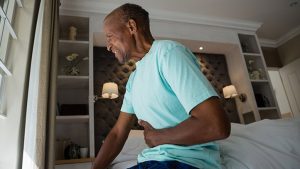
Preventing Bowel Obstructions
- Avoid foods with 2 or more grams of fiber per serving. Read Nutrition Facts labels on food packages to identify how much fiber is in one serving.
- Choose grain foods (such as breads, biscuits, soft buns, crackers, pasta, and cereals) made with refined white flour instead of those made with whole grains, cracked wheat, or bran.
- Avoid seeds and nuts.
- Eat fruits and vegetables that are cooked or canned, and avoid raw produce.
- Remove skins before cooking or eating fruits and vegetables.
- Drink at least 8 to 10 cups of fluids a day. Sip small amounts often and throughout the day.
- If you have bloating or cramps, avoid gas-producing foods such as broccoli, cabbage, and melons. Carbonated drinks, chewing gum, and drinking through a straw can also cause gas.
- To manage bloating, nausea, or vomiting, follow a clear liquid diet for a couple of days if it is recommended by your doctor. Clear liquids include juice, ice pops (Popsicles), gelatin, and broth.